 W
WTelecommunications Engineering is an engineering discipline centered on electrical and computer engineering which seeks to support and enhance telecommunication systems. The work ranges from basic circuit design to strategic mass developments. A telecommunication engineer is responsible for designing and overseeing the installation of telecommunications equipment and facilities, such as complex electronic switching systems, and other plain old telephone service facilities, optical fiber cabling, IP networks, and microwave transmission systems. Telecommunications engineering also overlaps with broadcast engineering.
 W
WAn analog delay line is a network of electrical components connected in cascade, where each individual element creates a time difference between its input and output. It operates on analog signals whose amplitude varies continuously. In the case of a periodic signal, the time difference can be described in terms of a change in the phase of the signal. One example of an analog delay line is a bucket-brigade device.
 W
WThe Bergeron diagram method is a method to evaluate the effect of a reflection on an electrical signal. This graphic method—based on the real characteristic of the line—is valid for both linear and non-linear models and helps to calculate the delay of an electromagnetic signal on an electric transmission line.
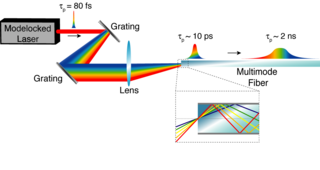 W
WChromo-modal dispersion (CMD) results from exciting various modes of a multimode waveguide with unique spectral components of a broadband optical signal. Modal dispersion during propagation in the waveguide then provides group velocity dispersion to the signal. The large modal dispersion inherent to multimode waveguides enables the dispersion per unit length of a chromo-modal dispersion device to be several orders of magnitude higher than that of diffraction grating or dispersion compensating fiber-based dispersive elements.
 W
WA cleanroom or clean room is an engineered space, which maintains a very low concentration of airborne particulates. It is well isolated, well-controlled from contamination, and actively cleansed. Such rooms are commonly needed for scientific research, and in industrial production for all nanoscale processes, such as semiconductor manufacturing. A cleanroom is designed to keep everything from dust, to airborne organisms, or vaporised particles, away from it, and so from whatever product is being handled inside it.
 W
WA complementary ground component is a terrestrial infill system for a mobile-satellite service that uses terrestrial base stations to provide connectivity in weak signal areas, such as urban areas. According to EU Decision 626/2008/EC:"complementary ground components" of mobile satellite systems shall mean ground-based stations used at fixed locations, in order to improve the availability of the mobile-satellite service in geographical areas within the footprint of the system's satellite(s), where communications with one or more space stations cannot be ensured with the required quality”
 W
WDifferential signalling is a method for electrically transmitting information using two complementary signals. The technique sends the same electrical signal as a differential pair of signals, each in its own conductor. The pair of conductors can be wires in a twisted-pair or ribbon cable or traces on a printed circuit board.
 W
WFirst-person view (FPV), also known as remote-person view (RPV), or simply video piloting, is a method used to control a radio-controlled vehicle from the driver or pilot's view point. Most commonly it is used to pilot a radio-controlled aircraft or other type of unmanned aerial vehicle (UAV). The vehicle is either driven or piloted remotely from a first-person perspective via an onboard camera, fed wirelessly to video FPV goggles or a video monitor. More sophisticated setups include a pan-and-tilt gimbaled camera controlled by a gyroscope sensor in the pilot's goggles and with dual onboard cameras, enabling a true stereoscopic view.
 W
WThe Fraunhofer Institute for Telecommunications, Heinrich Hertz Institute, HHI, also known as Fraunhofer HHI or Fraunhofer Heinrich Hertz Institute, is an organization of the Fraunhofer Society based in Berlin. The institute engages in applied research and development in the fields of physics, electrical engineering and computer sciences.
 W
WThe IEEE Alexander Graham Bell Medal is an award honoring "exceptional contributions to communications and networking sciences and engineering" in the field of telecommunications. The medal is one of the highest honors awarded by the Institute of Electrical and Electronics Engineers (IEEE) for achievements in telecommunication sciences and engineering.
 W
WAn isolator is a two-port device that transmits microwave or radio frequency power in one direction only. Due to internal behavior, the propagation in one direction is allowed while the other direction is blocked. The non-reciprocity observed in these devices usually comes from the interaction between the propagating wave and the material, which can be different with respect to the direction of propagation.
 W
WA loading coil or load coil is an inductor that is inserted into an electronic circuit to increase its inductance. The term originated in the 19th century for inductors used to prevent signal distortion in long-distance telegraph transmission cables. The term is also used for inductors in radio antennas, or between the antenna and its feedline, to make an electrically short antenna resonant at its operating frequency.
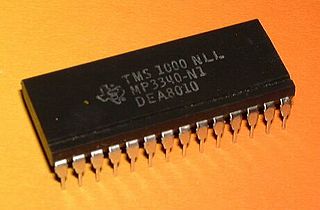 W
WA microprocessor is a computer processor where the data processing logic and control is included on a single integrated circuit, or a small number of integrated circuits. The microprocessor contains the arithmetic, logic, and control circuitry required to perform the functions of a computer's central processing unit. The integrated circuit is capable of interpreting and executing program instructions and performing arithmetic operations. The microprocessor is a multipurpose, clock-driven, register-based, digital integrated circuit that accepts binary data as input, processes it according to instructions stored in its memory, and provides results as output. Microprocessors contain both combinational logic and sequential digital logic, and operate on numbers and symbols represented in the binary number system.
 W
WA microprocessor development board is a printed circuit board containing a microprocessor and the minimal support logic needed for an electronic engineer or any person that wants to become acquainted with the microprocessor on the board and to learn to program it. It also served users of the microprocessor as a method to prototype applications in products.
 W
WA network address is an identifier for a node or host on a telecommunications network. Network addresses are designed to be unique identifiers across the network, although some networks allow for local, private addresses, or locally administered addresses that may not be unique. Special network addresses are allocated as broadcast or multicast addresses. These too are not unique.
 W
WNetwork Resource Planning is an enhanced process of network planning that incorporates the disciplines of business planning, marketing, and engineering to develop integrated, dynamic master plans for all domains of communications networks.
 W
WThe NPL network, or NPL Data Communications Network, was a local area computer network operated by a team from the National Physical Laboratory in London that pioneered the concept of packet switching.
 W
WOcarina Networks was a technology company selling a hardware/software solution designed to reduce data footprints with file-aware storage optimization. A subsidiary of Dell, their flagship product, the Ocarina Appliance/Reader, released in April 2008, uses patented data compression techniques incorporating such methods as record linkage and context-based lossless data compression. The product includes the hardware-appliance-based compressor, the Ocarina Optimizer and a real-time decompressor, the software-based Ocarina Reader.
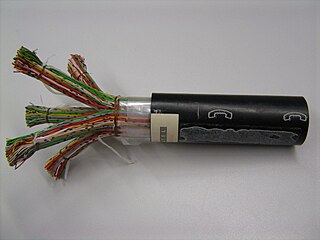 W
WThe primary line constants are parameters that describe the characteristics of conductive transmission lines, such as pairs of copper wires, in terms of the physical electrical properties of the line. The primary line constants are only relevant to transmission lines and are to be contrasted with the secondary line constants, which can be derived from them, and are more generally applicable. The secondary line constants can be used, for instance, to compare the characteristics of a waveguide to a copper line, whereas the primary constants have no meaning for a waveguide.
 W
WPsophometric voltage is a circuit noise voltage measured with a psophometer that includes a CCIF-1951 weighting network.
 W
WA signal travelling along an electrical transmission line will be partly, or wholly, reflected back in the opposite direction when the travelling signal encounters a discontinuity in the characteristic impedance of the line, or if the far end of the line is not terminated in its characteristic impedance. This can happen, for instance, if two lengths of dissimilar transmission lines are joined together.
 W
WA storage area network (SAN) or storage network is a computer network which provides access to consolidated, block-level data storage. SANs are primarily used to access data storage devices, such as disk arrays and tape libraries from servers so that the devices appear to the operating system as direct-attached storage. A SAN typically is a dedicated network of storage devices not accessible through the local area network (LAN).
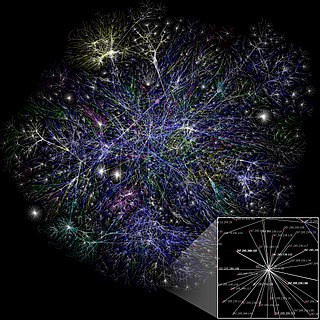 W
WA telecommunications network is a group of nodes interconnected by telecommunications links that are used to exchange messages between the nodes. The links may use a variety of technologies based on the methodologies of circuit switching, message switching, or packet switching, to pass messages and signals.
 W
WIn telecommunications and related engineering, the term timeout or time-out has several meanings, including:A network parameter related to an enforced event designed to occur at the conclusion of a predetermined elapsed time. A specified period of time that will be allowed to elapse in a system before a specified event is to take place, unless another specified event occurs first; in either case, the period is terminated when either event takes place. Note: A timeout condition can be canceled by the receipt of an appropriate time-out cancellation signal. An event that occurs at the end of a predetermined period of time that began at the occurrence of another specified event. The timeout can be prevented by an appropriate signal.
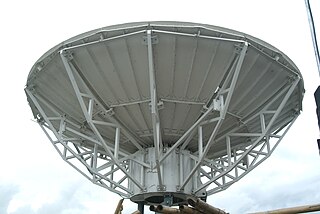 W
WIn telecommunications, transmission is the process of sending and propagating an analog or digital signal using a wired, optical, or wireless electromagnetic transmission medium.
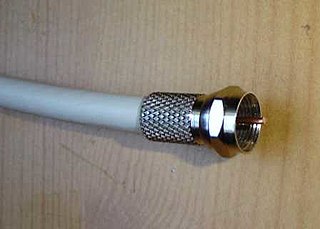 W
WIn electrical engineering, a transmission line is a specialized cable or other structure designed to conduct electromagnetic waves in a contained manner. The term applies when the conductors are long enough that the wave nature of the transmission must be taken into account. This applies especially to radio-frequency engineering because the short wavelengths mean that wave phenomena arise over very short distances. However, the theory of transmission lines was historically developed to explain phenomena on very long telegraph lines, especially submarine telegraph cables.
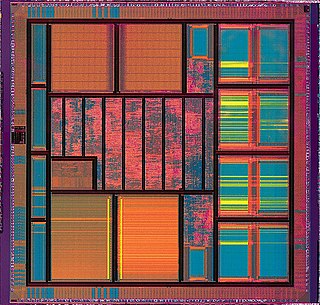 W
WVery large-scale integration (VLSI) is the process of creating an integrated circuit (IC) by combining millions of MOS transistors onto a single chip. VLSI began in the 1970s when MOS integrated circuit chips were widely adopted, enabling complex semiconductor and telecommunication technologies to be developed. The microprocessor and memory chips are VLSI devices. Before the introduction of VLSI technology, most ICs had a limited set of functions they could perform. An electronic circuit might consist of a CPU, ROM, RAM and other glue logic. VLSI enables IC designers to add all of these into one chip.
 W
WIn radio-frequency engineering and communications engineering, waveguide is a hollow metal pipe used to carry radio waves. This type of waveguide is used as a transmission line mostly at microwave frequencies, for such purposes as connecting microwave transmitters and receivers to their antennas, in equipment such as microwave ovens, radar sets, satellite communications, and microwave radio links.
 W
WThe incremental inductance rule, attributed to Harold Alden Wheeler by Gupta and others is a formula used to compute skin effect resistance and internal inductance in parallel transmission lines when the frequency is high enough that the skin effect is fully developed. Wheeler's concept is that the internal inductance of a conductor is the difference between the computed external inductance and the external inductance computed with all the conductive surfaces receded by one half of the skin depth.